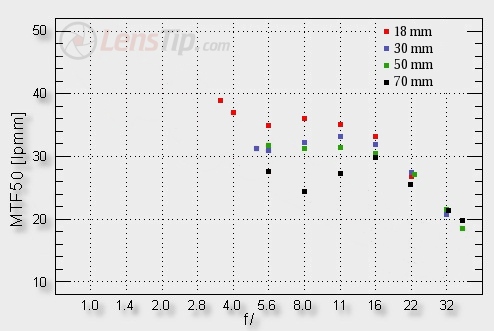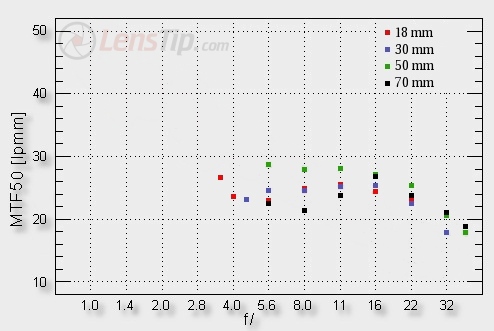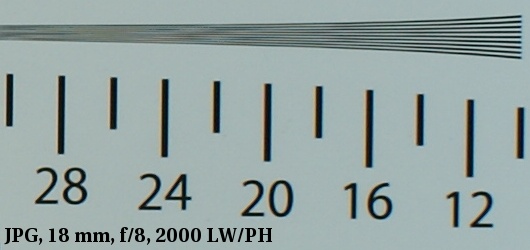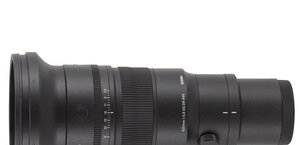Sony DT 18-70 mm f/3.5-5.6
4. Image resolution

Let’s go to the heart of the matter. We can praise the lens’s performance only at 18 mm in the frame centre, where the resolution near the maximum relative aperture reaches a high level - over 39 lpmm. In other cases the performance is interesting and strange to say the least of it. In fact at every focal length, in the frame centre as well as at the edge, the resolution near the maximum relative aperture is more or less good, then it decreases and in the aperture range of f/5.6-f/8.0, so in the place where normal lenses usually reach the peak of their possibilities, the Sony reaches a local minimum…Then the image quality starts to increase to near f/11 and then it decreases again because such is the effect of diffraction. We can state with a lot of certainty that such a performance is not a result of a measurement error. It can be observed at all focal lengths, in the middle and at the edges of the frame. Apart from that the graphs, presented by us, feature average results from two independent testing charts with different dimensions so each time the camera was situated in different distance from them and it chose different exposure times. The difference between the results from both charts is slight, firmly within the margin of error, so in both cases the trend, noticed by us, is recorded.
Please Support UsIf you enjoy our reviews and articles, and you want us to continue our work please, support our website by donating through PayPal. The funds are going to be used for paying our editorial team, renting servers, and equipping our testing studio; only that way we will be able to continue providing you interesting content for free. |
- - - - - - - - - - - - - - - - - - - - - - - - - - - - - - - - - - - - - - - - - - - - - - - -

Forgetting about an untypical MTF50 function graph, dependent on the aperture, and looking only at the results of the lens in the frame centre we must honestly admit the Sony compares quite well with its competitors.
What might be responsible for such a strange performance and so low resolution at the edge of the field? We will try to answer this question in next chapters but you can get the first pointer glancing at the test chart crop, taken from the centre of the field. It features something that definitely shouldn’t have been seen in the frame centre.
 |






